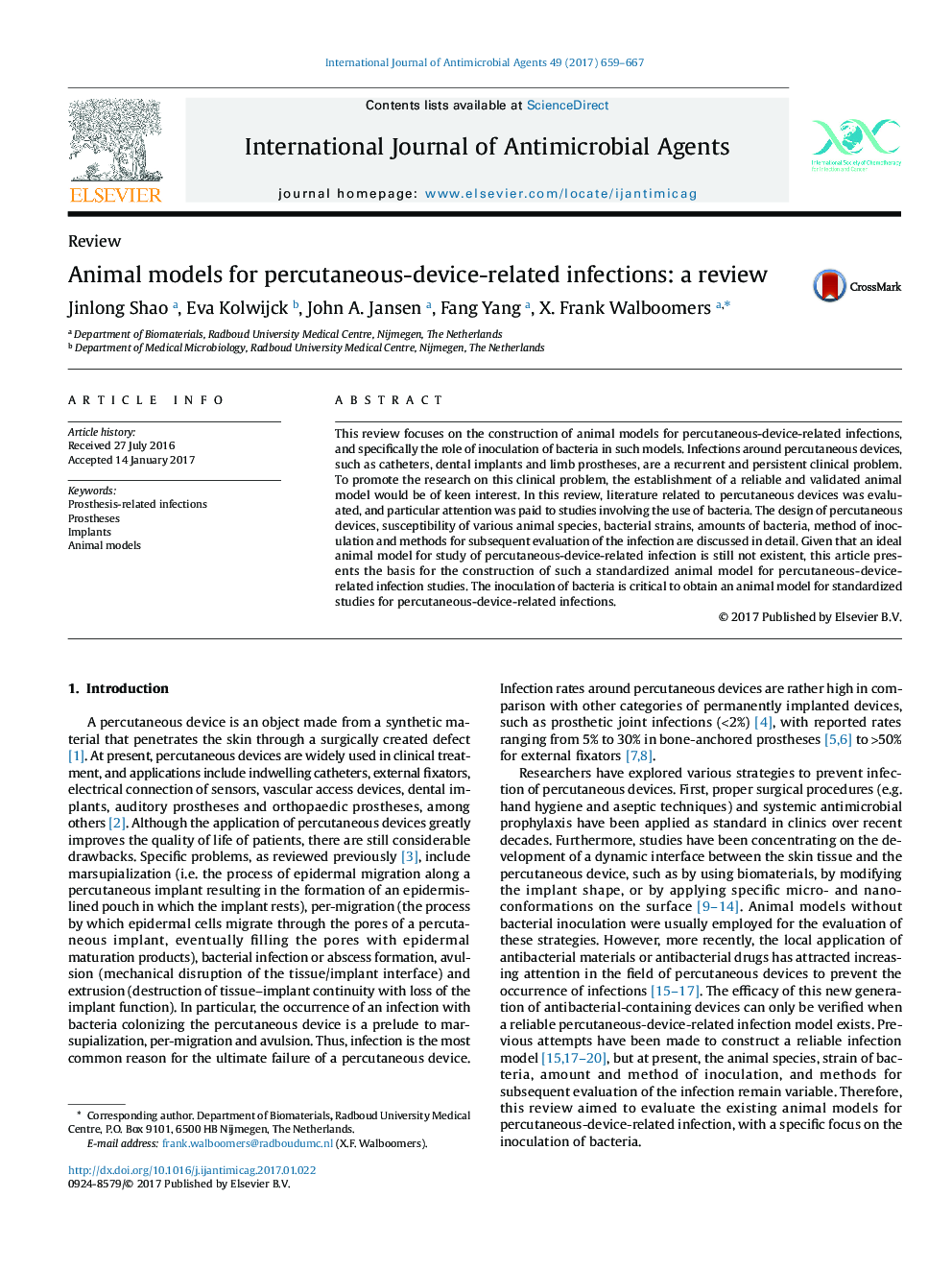| Article ID | Journal | Published Year | Pages | File Type |
|---|---|---|---|---|
| 5666905 | International Journal of Antimicrobial Agents | 2017 | 9 Pages |
â¢The use of animal models for percutaneous device-related infections was evaluated.â¢Bacterial inoculation results in reliable infection rates.â¢Large animal models are more reliable than small animal models.â¢Standard laboratory strains lead to more reproducible results than swabs from patients.
This review focuses on the construction of animal models for percutaneous-device-related infections, and specifically the role of inoculation of bacteria in such models. Infections around percutaneous devices, such as catheters, dental implants and limb prostheses, are a recurrent and persistent clinical problem. To promote the research on this clinical problem, the establishment of a reliable and validated animal model would be of keen interest. In this review, literature related to percutaneous devices was evaluated, and particular attention was paid to studies involving the use of bacteria. The design of percutaneous devices, susceptibility of various animal species, bacterial strains, amounts of bacteria, method of inoculation and methods for subsequent evaluation of the infection are discussed in detail. Given that an ideal animal model for study of percutaneous-device-related infection is still not existent, this article presents the basis for the construction of such a standardized animal model for percutaneous-device-related infection studies. The inoculation of bacteria is critical to obtain an animal model for standardized studies for percutaneous-device-related infections.
